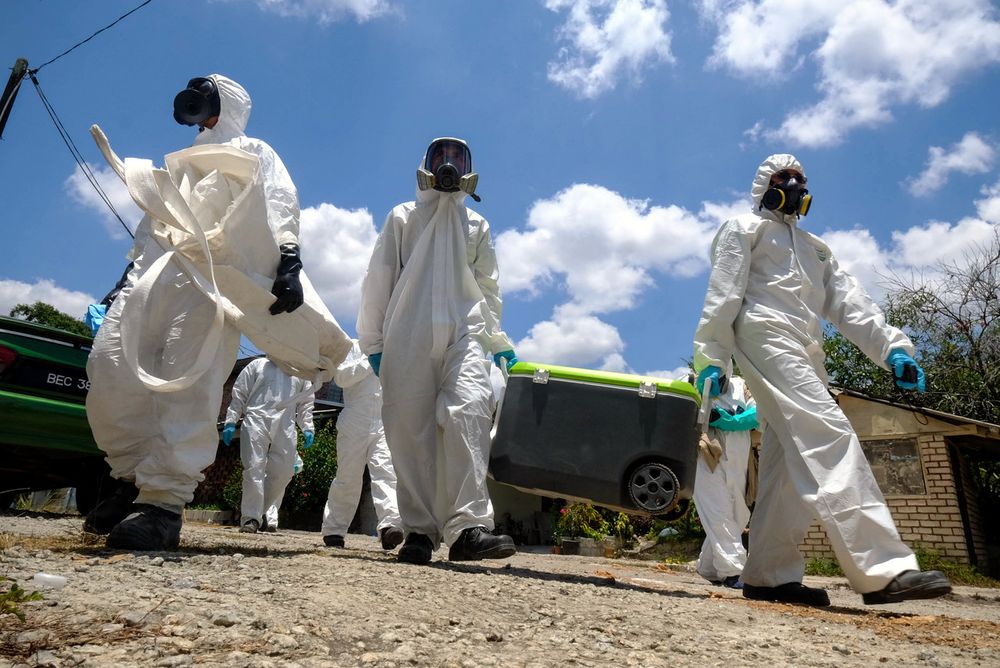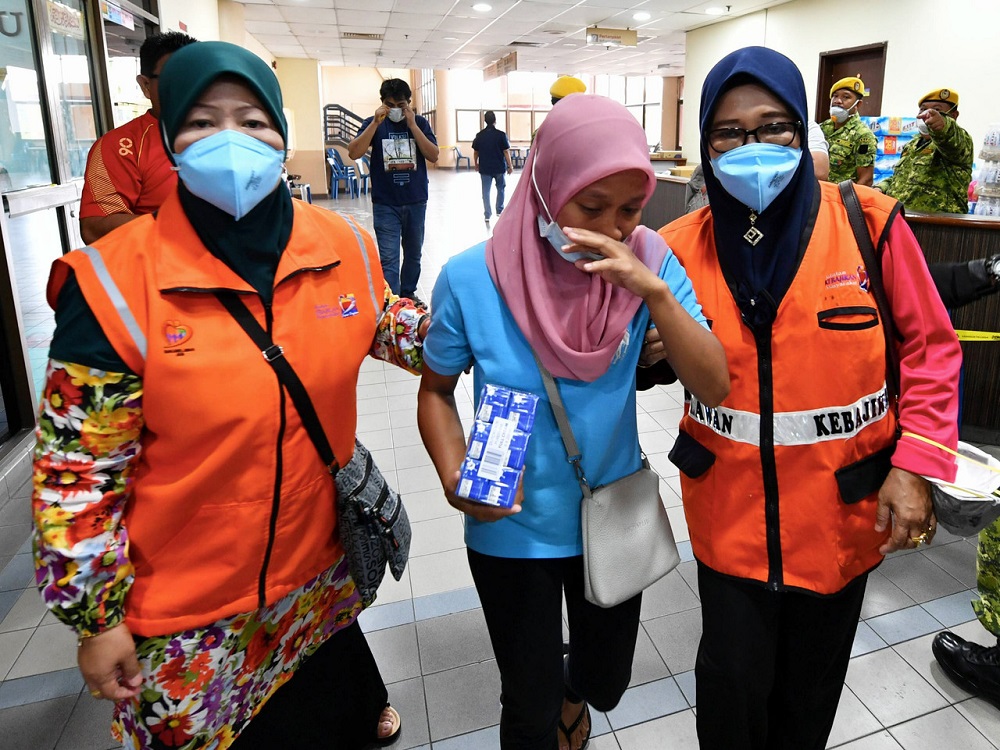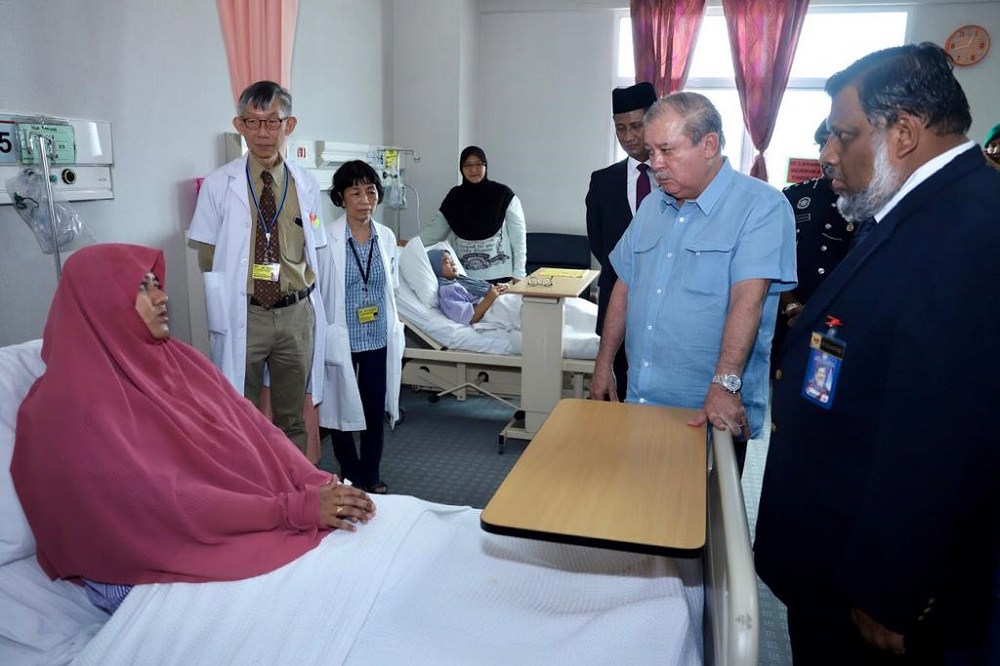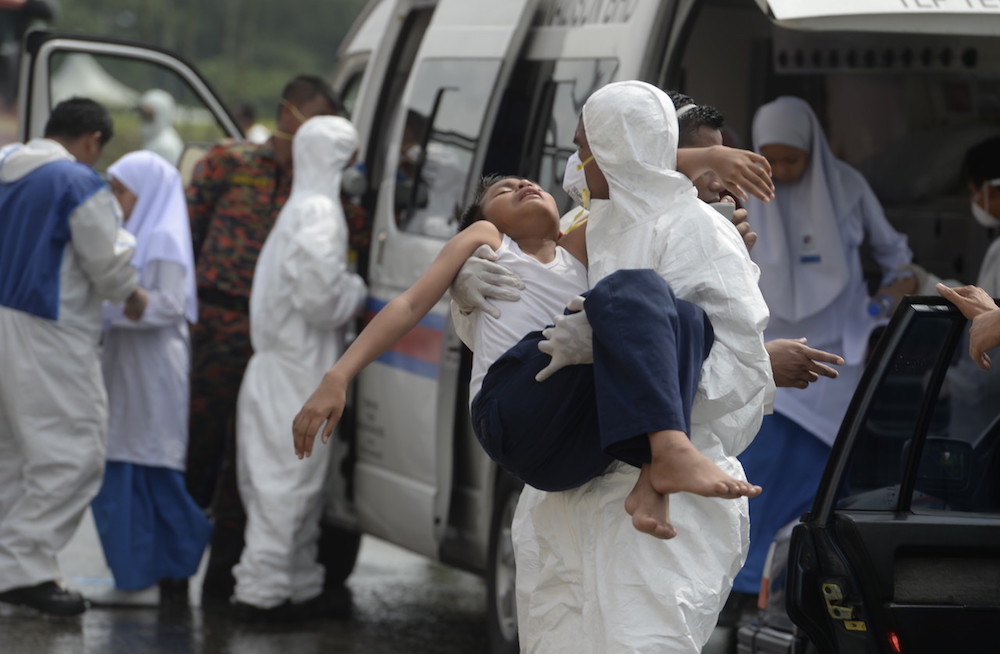KUALA LUMPUR, July 13 — Pasir Gudang in Johor has been thrust into the spotlight once again after another pollution incident made the headlines just months after the Sungai Kim Kim disaster.
Three months ago, in March, toxic chemical waste was illegally dumped into Sungai Kim Kim in Pasir Gudang, affecting some 4,000 people who sought treatment for shortness of breath, nausea and vomiting after inhaling toxic fumes.
The waste thrown into Sungai Kim Kim has since been identified as marine oil waste which emits flammable methane and benzene fumes.
In the most recent incident in Taman Mawar on June 22, 75 students from neighbouring schools were affected.
To make matters worse, the risk of future contamination still remains with the existence of at least 250 chemical plants among the 2,005 factories in Pasir Gudang.
So what do we really know about the pollution problem in Pasir Gudang? Malay Mail takes a look at what has happened so far:

March 8 — The Johor Department of Environment (DoE) identifies the illegally dumped substance in Sungai Kim Kim, Pasir Gudang as marine waste.
Eyewitnesses say the dumping was done during the pre-dawn hours of March 7.
Thirty-one people, including students, canteen workers and a Department of Environment (DoE) investigator, are hospitalised.
March 12 — Three men admit their involvement in the illegal dumping. By now, about 250 people have been affected and 13 schools closed.
March 14 — A staggering 2.43 tonnes of chemical waste is extracted from Sungai Kim Kim. By this time, 947 people have sought medical treatment for shortness of breath, nausea and vomiting, including 82 who were warded at the Sultan Ismail Hospital, 85 at Sultanah Aminah Hospital, 39 at Pasir Gudang KPJ Hospital and three at the Regency Hospital.
March 17 — The Johor state government, through the Social Welfare Department (JKM), will provide counselling for students, to help them recover from the trauma of the chemical waste pollution in Sungai Kim Kim.

March 19 — Energy, Science, Technology, Environment and Climate Change (MESTECC) Minister Yeo Bee Yin declares the contaminated section of Sungai Kim Kim safe after the clean-up.
By this time, a whopping 900 tonnes of contaminated substances and 1,500 metric tonnes of contaminated water have been cleared from the 1.5-kilometre stretch of Sungai Kim Kim that was affected.
At this stage, it was reported that more than 4,000 people were affected and 111 schools shuttered.
March 22 — Yeo announces that the cost to clear the waste from Sungai Kim Kim was RM6.4 million, and projected the price will balloon to over RM10 million.
March 24 — Two company directors and a lorry driver of a used tyre-processing company are charged in the Johor Baru Sessions Court for the chemical contamination of Sungai Kim Kim.
The three are Singaporean Wang Jin Chao, 34, and Malaysians Yap Yoke Liang, 36, and lorry driver N. Maridass, 35.

April 1 — Then Mentri Besar Datuk Osman Sapian announces that the state government is in the midst of identifying several areas suitable for the relocation of factories from the Pasir Gudang area.
He said this was to prevent a recurrence of the chemical waste pollution of Sungai Kim Kim.
April 6 — An action committee formed to look into compensation for the Sungai Kim Kim victims says it plans to sue the state government and the Johor menteri besar.
April 23 — MESTECC announces that it will adopt a standard operating procedure (SOP) to address toxicological pollution and to improve preparedness of relevant parties and agencies in the event of a toxic pollution incident similar to that at Sungai Kim-Kim.
April 24 — Sim Wei Der, another Singaporean company director wanted in connection with the chemical pollution of Sungai Kim Kim, surrenders to the Johor police, and is charged a day later in the Johor Baru Sessions Court for abetting three others in the illegal dumping of chemical waste into Sungai Kim Kim.
May 2 — MESTECC appoints a new director for the Johor DoE in a bid to strengthen the department’s machinery to tackle river pollution in the state.
Yeo says efforts are being made to save 20 rivers in the state classified as polluted.
.jpg)
June 1 — The Health Ministry forms a medical team to examine about 6,000 victims affected by the Sungai Kim Kim toxic fumes and to provide early intervention treatment for patients showing signs of sickness.
June 20 — A total of 15 students from two schools in Pasir Gudang complain of breathing difficulties and vomitting.
Johor Health, Culture and Heritage Committee chairman Mohd Khuzzan Abu Bakar says initial air monitoring around the area found the air is at a safe level.
June 21 — Authorities investigate if liquefied petroleum gas (LPG) fumes made the students sick despite tests showing normal air quality,
This is after the Pasir Gudang Fire and Rescue Department was alerted about suspected air pollution at Sekolah Agama Taman Mawar and Sekolah Kebangsaan Pasir Gudang 4 at 3.39pm.
June 22 — Three schools and two pre-schools are ordered to be closed for two days beginning June 23. The schools are located between 100 and 800 metres away from Sekolah Agama Taman Mawar where the incident first started.
Six patients are later admitted to hospital and discharged, while no new patients were admitted.

June 24 — Housing and Local Government Minister Zuraida Kamaruddin blames the latest incident on Sungai Kim Kim.
Zuraida said initial investigations found the contractor assigned to Sungai Kim Kim to clear the waste did not do a thorough enough job.
However, Johor Mentri Besar Datuk Dr Sahruddin Jamal later said that the incident is not linked to the previous contamination of Sungai Kim Kim, adding that the most recent incident is believed to be from fumes, but from a different source.
The Johor government then instructs 17 schools, 69 kindergartens and pre-schools as well as a higher learning institute involving 20,108 students to be closed for four days as a precautionary measure. Air quality readings in the area are worrying at this time.
June 26 — Deputy Prime Minister Datuk Seri Dr Wan Azizah Wan Ismail said the cause of the latest episode of air pollution in Pasir Gudang has yet to be identified.
Four hundred and seventy-five schools in Pasir Gudang including 111 government primary and secondary schools, three higher educational institutions, 14 private and international schools and 347 private pre-schools remain closed.

June 29 — Ministry of Education announces that all schools and educational institutions will resume normal operations beginning June 30.
June 30 — DPM says there is a need for a long-term plan to resolve the pollution problems in Pasir Gudang to prevent a recurrence of such incidents, while factoring in the economic output by the manufacturing industry in the area.
July 1 — MESTECC announces that the government will not approve any more applications for the construction of new chemical plants in Pasir Gudang.
Yeo also announces that all chemical factories in Pasir Gudang are required to adopt schools which are closest to their operations, and equip the schools with mandatory gas detectors.
July 2 — Yeo vows legal action against those behind a social media post accusing her husband’s involvement in the second pollution incident.
The post had accused Putrajaya of being slow to react because Yeo’s husband Lee Yeow Seng owns three chemical plants in Pasir Gudang. Lee is IOI Properties Group Bhd chief executive officer.

The group does own three plants in Pasir Gudang but they deal with palm oil, not chemicals.
Residents of Pasir Gudang near the affected areas are unhappy that the source of the pollution has still not been identified, with some deciding to keep their children home from school till it is.
July 3 — Zuraida announces that a special committee to co-ordinate with parties involved in the pollution issues in Pasir Gudang will be set up.
July 5 — Standard Six student Irfan Wafiy is diagnosed with myokymia by specialists at the Kuala Lumpur Hospital (HKL), said to have been caused by breathing in the chemical fumes polluting Sungai Kim Kim.
July 6 — Health Minister Datuk Seri Dzulkefly Ahmad says it is not certain if the boy’s condition is linked to the toxic pollution from Sungai Kim Kim.

Deputy Health Minister Dr Lee Boon Chye later says that there is no proof to show that the toxic pollution at Sungai Kim Kim caused myokymia in the 12-year-old.
Dr Lee says the boy, who was born prematurely, has a history of fits since he was four.
July 7 — Dzulkefly clarifies that the death of a woman, Marini Kasman, 38, who had allegedly succumbed to air pollution in Pasir Gudang, was actually due to heart failure.
On the same day, Johor MB announces that the state government is drawing up a sustainable town development plan for Pasir Gudang as a long-term measure to address environmental pollution in the area.
July 8 — The DoE says it will be monitoring air quality round the clock at all 111 primary and secondary schools in Pasir Gudang.




















